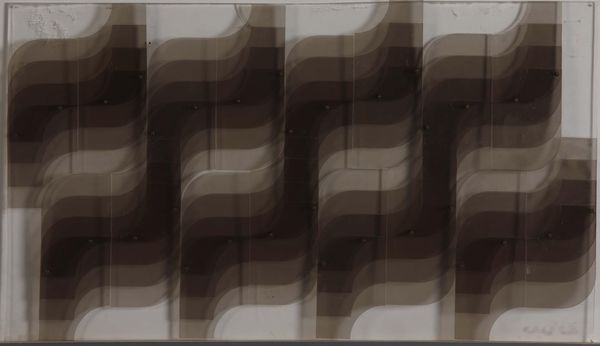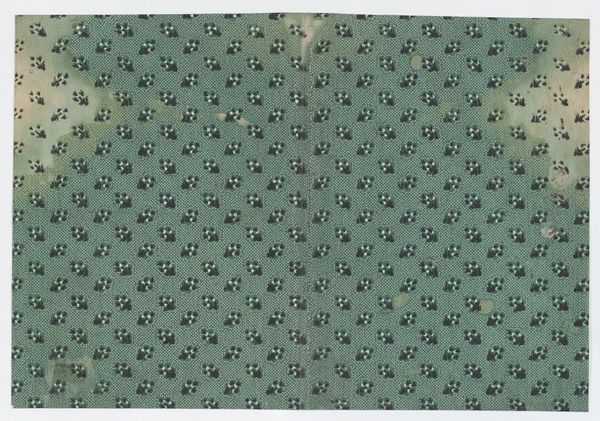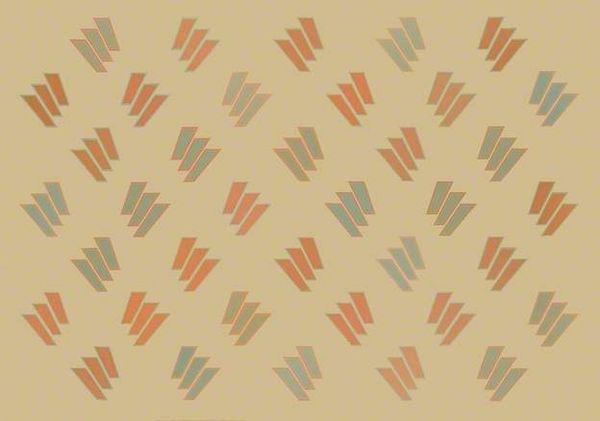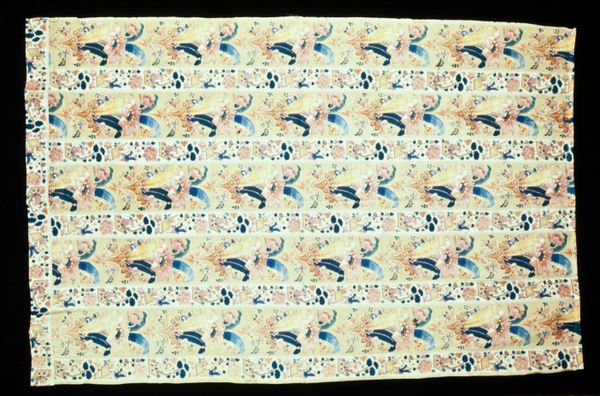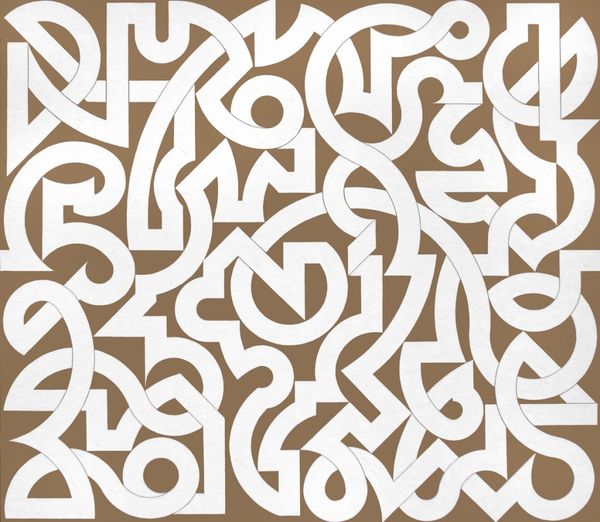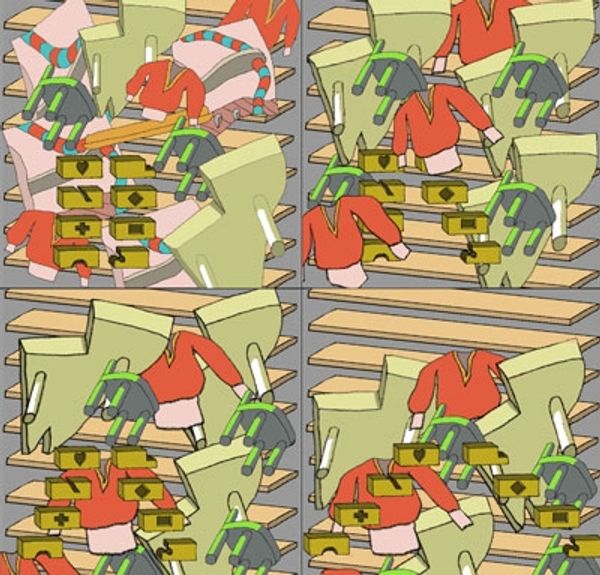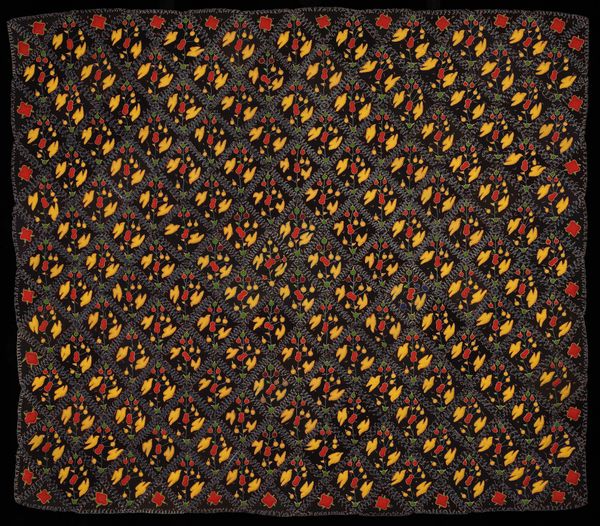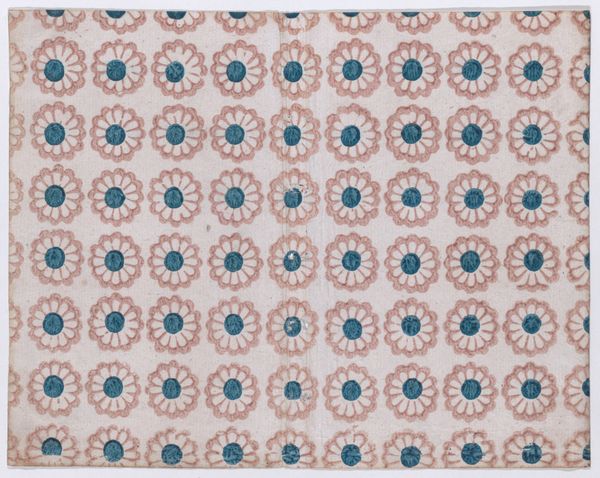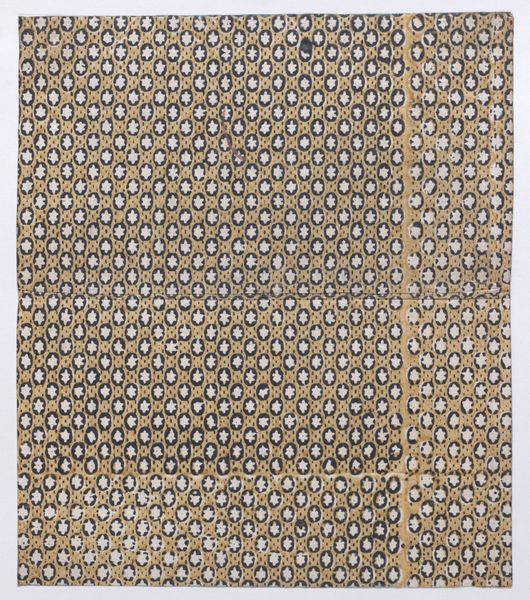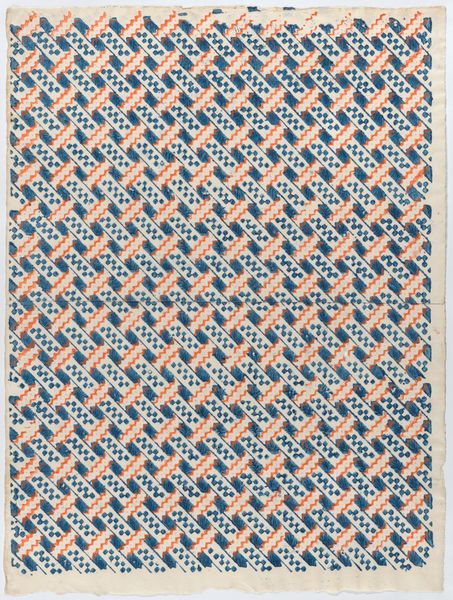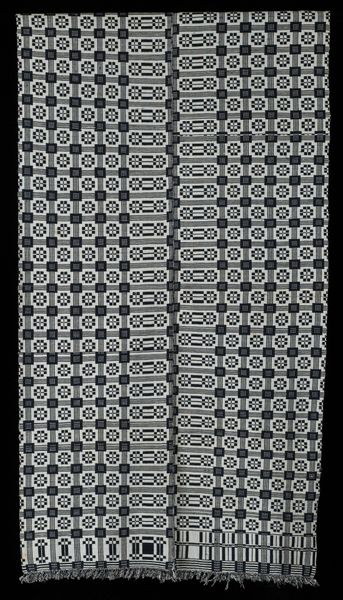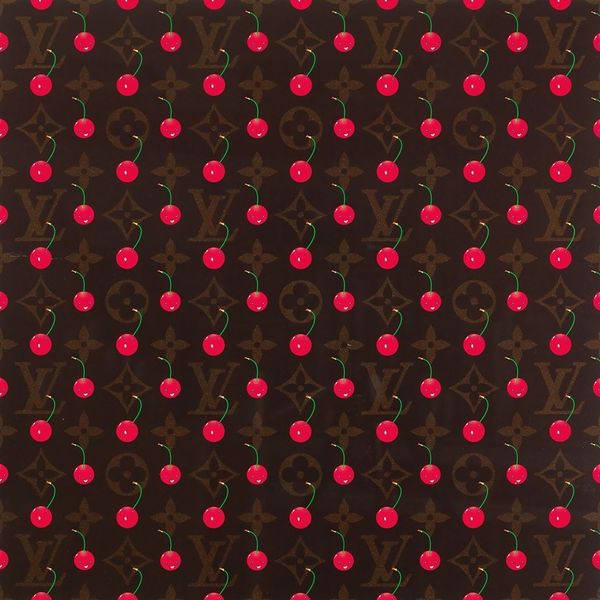
graphic-art, textile
#
pattern heavy
#
art-deco
#
graphic-art
#
textile
#
geometric pattern
#
abstract pattern
#
organic pattern
#
geometric
#
repetition of pattern
#
vertical pattern
#
pattern repetition
#
layered pattern
#
funky pattern
#
pattern work
Dimensions: 40 x 40 in. (101.6 x 101.6 cm)44 3/4 x 45 3/8 x 1 3/4 in. (113.67 x 115.25 x 4.45 cm) (outer frame)
Copyright: No Copyright - United States
Editor: So, this is an Untitled Panel from around 1930, currently housed at the Minneapolis Institute of Art. It appears to be some kind of textile. I find the patterns quite striking – they're geometric, almost architectural, and a little bit dizzying. What do you make of it? Curator: For me, it’s all about understanding the means of production. We need to look at the materials used, the techniques employed. It appears mass-produced, hinting at an engagement with commercial design. How does the panel reflect broader social contexts? This was likely produced for consumption in the domestic sphere. Does the patterning evoke particular industries or manufacturing processes prominent at the time? Editor: Well, the geometric shapes make me think of cityscapes or industrial complexes. Are you saying this panel blurs the lines between fine art and mass-produced goods? Curator: Precisely. Traditionally, craft was subordinate to “high art.” Pieces like this, produced anonymously, challenge that hierarchy. Think about the labour involved. Was this made by an individual artisan, or a factory worker on an assembly line? It impacts the value we assign it. How does its availability alter notions of taste and luxury? Editor: That's fascinating. I never considered the manufacturing process as being part of the artwork itself. Curator: Materiality matters! Art is never created in a vacuum; instead, it reflects larger social and economic forces. Analyzing textiles in relation to labour and production offers vital insights into broader cultural narratives. Now, what patterns did the intended buyer of such product participate in and fuel the further spread of? Editor: Thinking about it as part of this machine shifts my perception completely. Thank you. Curator: And it helps one view the world in a more comprehensive, material way!
Comments
No comments
Be the first to comment and join the conversation on the ultimate creative platform.
